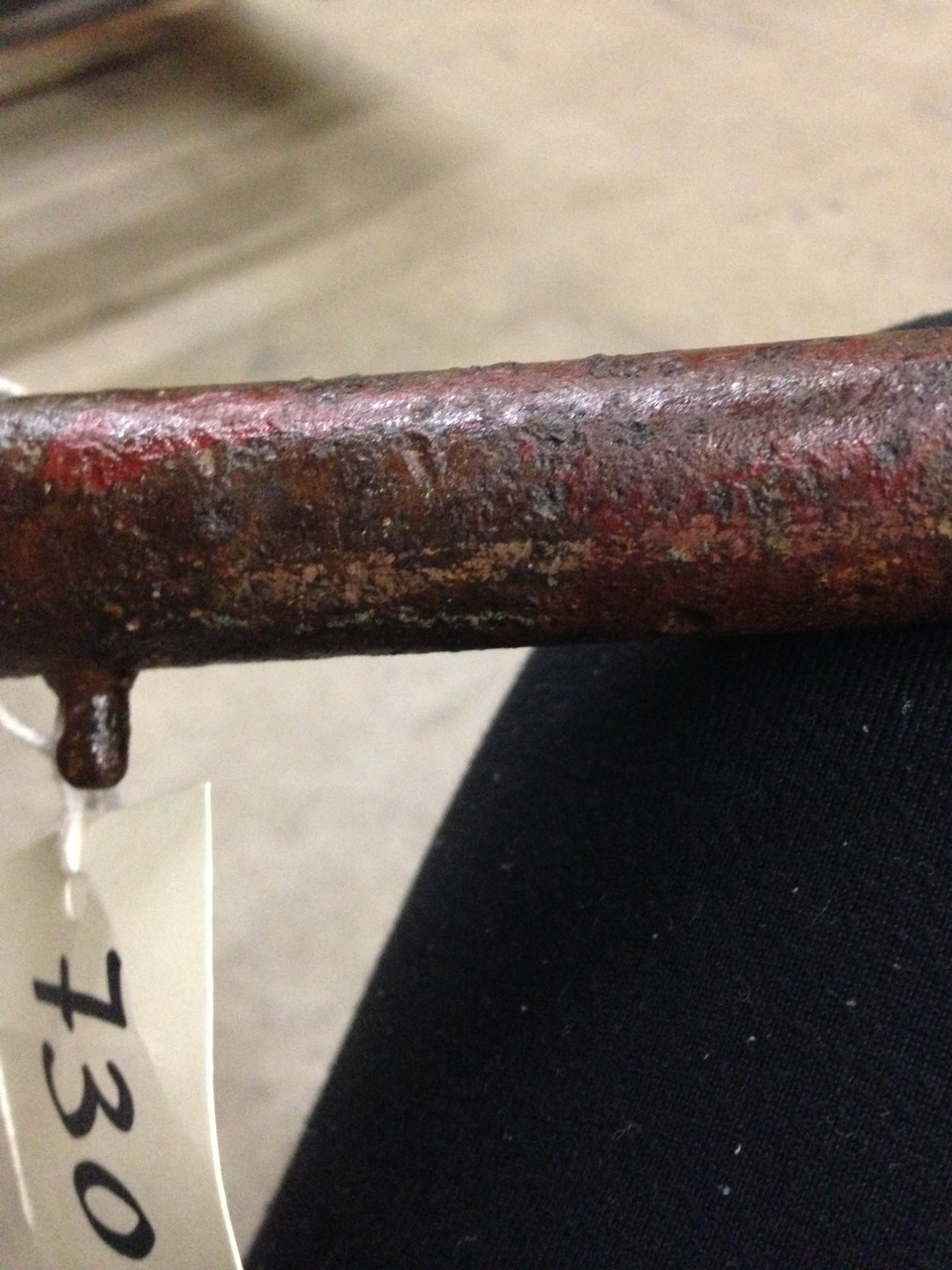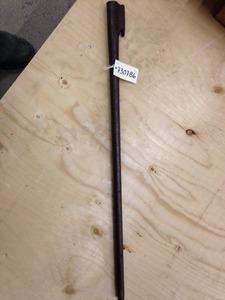Original Findings
In material culture and provenance research, the methodology and processes of the researcher are worthy of scrutiny as well as the findings, which is what I hope to explore here. One of the more significant hurdles when covering this gun barrel is the informality of its placement. Because it has no concrete history, it is very easy to attribute a background or bias to this barrel which may or may not exist. Therefore this exhibit is not so much about the cold hard facts, but rather the possibilities for the gun barrel, and the disproving of my own assumptions.
Going into this project, I operated under the assumption that the gun barrel was placed in a whirlwind of hostility, as the image of a gun being placed in a stone fence conjures images of anger as a differentiator between Church and Community.
The first piece of original research found was the red and yellow paint residue on the gun barrel itself. These were not marked in the original museum file, and add weight to the idea that the barrel was meant to be seen as a marker and not as a resting spot for it.
An important thing to note while talking about St. Anne's Church is that it has burned down twice in the last decade. Due to the date of the finding of the barrel, it is highly likely that the second incarnation of the church was the one standing when the barrel was placed in the fence.
The first photograph from 1930 is this second Church, build in 1904. A comparison with a piece of artwork found on the Kingclear First Nation website showcasing traditional art and culture shows remarkable similarities to the Church in this photo, allowing me to draw the conclusion that they are the same. Another photo found from the Museum of New Brunswick shows the Kingsclear First Nation congregated around the Church in 1961. This disproves the notion that the gun barrel was placed in hostility, as it seems that many from the Kingsclear First Nation were active in the Church. A photograph from 1887 also corroborates this assumption, as the population of Kingsclear has gathered for Corpus Christ Day.
This complicates the history of the barrel as this link between Kingsclear and the Church disprove the initial assumption that the gun barrel was placed from a place of hostility. If the populace of Kingsclear were congregants of the Church, why would they place such a hostile object? But this brings up another issue; were these photos just an attempt at white washing? Was the gun barrel a subtle dig at the Canadian Government and the Catholic Church for assimilation? I assume not, as I found this quote from an elder talking about her experience with Corpus Christi Day:
“In 1898, when I was just a little girl of six, I remember the feast of Corpus Christi. It was a very important religious day for the Maliseet Indians who lived all along the Saint John River valley. Large groups of Indians came here by canoes, all the way from Tobique,Woodstock, Oromocto and Saint Mary’s… Sometimes there would be two or three weddings during the Corpus Christi celebration.” Louise Polchies, PILICK (Kingsclear First Nation)
Instead of answers, more questions arise, which is one of the elements that makes this gun barrel so mysterious. Referring back to the context section of this exhibit, there was an intended centralization program for all the Maliseet First Nations to be moved to Kingsclear reserve, as it held the Catholic Church, a riverbank and plenty of room for expansion. This plan failed spectacularly, however an important takeaway is that the Church stood with the community and their choices, showing a strong bond as opposed to a rivalry.
After speaking with a relative who collects and restores firearms, I feel like I can safely make the assumption that the barrel seen here is a Cooey 84/840 30" .22 Shotgun. They were made in Cobourg, Ontario between 1929, and the single shot gun, as the one seen here, started production in 1948. This fits the timeline which has been explored so far in the investigation of this barrel. In 1961 the company was taken over by Winchester, but due to its weathered state and the fact that the barrel was found in 1963 it can be safely said that, if this barrel is a Cooey, it would have been placed before the takeover. The relevance of knowning the make and model is that a Cooey was a popular, Canadian made gun. Their popularity made it possible for the average person to own one. Understanding its worth may help understand its original placement.

